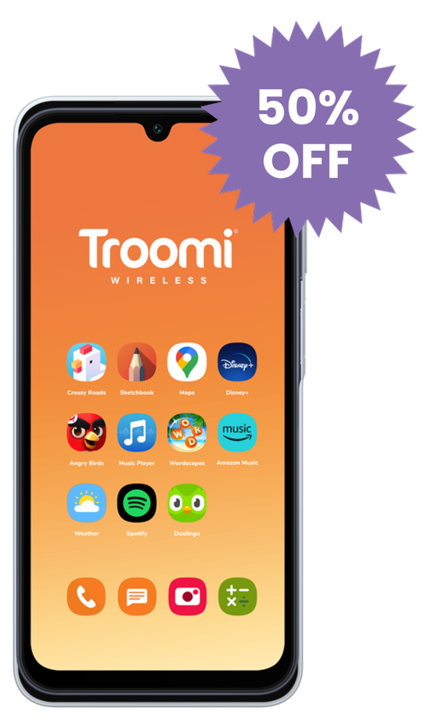The challenge was simple: Could my students survive one day with no technology in the classroom (at least not of the personal variety)? Could they last 75 minutes without access to their phones, laptops, watches, earbuds, or any other personal electronics and focus on engaged, tech-free learning? I had high hopes but also realistic expectations. That’s why I carefully planned out the day with printed materials, interactive activities, and videos to supplement the lesson. To sum it up, my students struggled.
Still, the experience opened my eyes to our kids’ dependence on technology. Even with ample preparation (they knew the experiment was coming), they complained, fidgeted, acted out, and lacked focus. Though I witness their tech use every day, I was surprised at their collective response. It gave me much to consider, not only about the effects of personal tech in our classrooms but also about the need to teach our kids about appropriate tech use in all settings.
The Rise of Tech
Not long ago, schools without technology were the norm. But today, it’s not uncommon for teens to have access to multiple devices simultaneously, both in and out of school. Even with conscientious programs like Wait Until 8th (which encourages kids to delay owning a smartphone until eighth grade), by the time they hit my ninth grade classroom, most students have phones. And for those few who don’t, they can easily access their school-issued laptop for all their technology needs. It’s just the way things are.
Realistically, tech is here to stay. So, the challenge becomes how to reap all the benefits of tech in the classroom without becoming controlled by devices.
The Benefits of Tech in the Classroom
Don’t get me wrong. I’m not saying banning tech in schools is a good idea. For many reasons, technology in the classroom is a great teaching tool. Here are a few benefits to consider.
- Online Textbooks: Students can often access their textbooks online. On a basic level, the textbook my students study is available on a free app. This way there are no worries about forgetting books.
- Information Access: Tech also gives students access to a world of supplemental information. Very often, I invite my students to search for articles and other resources on approved apps to supplement our lessons. They find things I don’t, and they can access more without me printing pages and pages of handouts.
- Proper Learned Behavior: Because we live in a tech-heavy world, students need to learn how to use tech effectively without becoming enslaved to its addictive power. In a controlled environment like a classroom, students can learn the proper use of tech.
The Drawbacks of Tech in the Classroom
However, tech does present some challenges in the classroom as well. There are definitely days when I wish for a completely tech-free classroom. Here are some struggles to consider.
- Cognitive Development: As much as I love my ninth graders, they still have a lot to learn. In general, teens lack the judgment skills necessary to control their behavior when it comes to tech. The Center for Parent and Teen Communication states the following.
While cognitive development is tied to physical development, we cannot assume that just because a teen’s body has matured that his/her brain has caught up yet. The ability to think in more mature ways can also differ by setting.… Their emotional centers develop faster than decision-making centers.
That’s why teens return to online games during class even though they’ve been asked—repeatedly—to stop. They’re still figuring out that behavioral control.
- Distraction: Our kids are easily distracted, and tech doesn’t help. With online notifications, texts, game requests, music, YouTube, Reels, TikTok, and the like, teens have countless options for entertainment. And when the class subject loses its appeal, that entertainment is only a click or swipe away.
- Instant Gratification: Living in a world of constant gratification doesn’t do our kids any favors. When so much is available at their fingertips, they sometimes don’t engage in the meaningful learning available to those who pay attention or even feel a little bored with their current surroundings.
How Teachers Can Help
While it may not be realistic to think that classrooms can be totally tech free, here are a few things that can help teachers successfully navigate technology in the classroom.
- Set clear boundaries from the beginning. This includes clear communication with both students and parents about expectations for tech in class. Consider the following questions when determining the boundaries: What will happen if they are caught doing non class-related activities on tech? How many warnings will be given? What are the consequences?
- Enforce the boundaries once they are set. I admit, this is a tough one. The battle can become overwhelming. But find the balance that works for you. We’re trying a new thing this year that has become a sleeper hit in one of my classes. It’s called phone vacation.
I turned some shoe pocket organizers into a charging station. When kids misuse their tech, they can charge their phone in phone vacation. They think it’s such a fun idea that they have begun to enforce the rules themselves. Here are some other ideas about phone management.
- Issue invitations often. When polling my kids about what is working and not working in our classroom generally, I always get responses about the distractions of phones. Sometimes students admit that they are distracted by phones, while other times students are distracted by others’ phone use.
But their solution is always the same. They say the most effective way to curtail tech abuse is to invite them to put the phone away. They are kids after all, and likely need gentle reminders to enforce appropriate behavior.
- Vary teaching methods. Believe it or not, just because teens are older, they still like doing hands-on, interactive activities. Sitting and listening to a boring lecture for 75 minutes can be grueling—even for the teacher. So plan lots of station work, object lessons, group work, and personal discovery.
Even artwork and games can facilitate learning that doesn’t involve tech. The more engaging the teacher and the content, the less likely students are to resort to tech.
How Parents Can Help
Even though, as parents, we’re not in the classroom every day with our kids, we can still make a difference in keeping their classrooms personal tech free. Here are some things that can help.
Monitor your children’s phone use. This includes setting screen-time limits, especially during school hours, and setting family boundaries about when and where to use personal electronics.
Last year, one of my most respectful students was a cool football player who didn’t bring his phone to school (per his parents’ rule). He could use his school-issued computer when needed, but he often used a classroom textbook. He didn’t suffer academically with his tech-free lifestyle, and his behavior was top-notch.
- Discuss the classroom expectations often. Because we’re talking about teens here, remember that reminders are good. Get on the same page with your child about what good phone use looks like. Discuss the teachers’ expectations at school as well as what you expect as their parents. I’ve found that kids often respond well when the expectations are delivered with clear explanations and love.
- Choose devices that make it easy. Troomi offers some great options for helping teens transition into appropriate phone use according to their age, development, and needs. It’s nice to know there are options available to allow our kids a chance to enter the phone world without having that world overwhelm them.
The Bottom Line
You may not find many schools without technology today. In fact, a tech-free classroom might be just as elusive. That’s just the world we live in. However, with a little care, training, and forethought, parents and teachers can work together to accentuate the positives of technology in the classroom while eliminating the pitfalls that can invite tech trouble.


